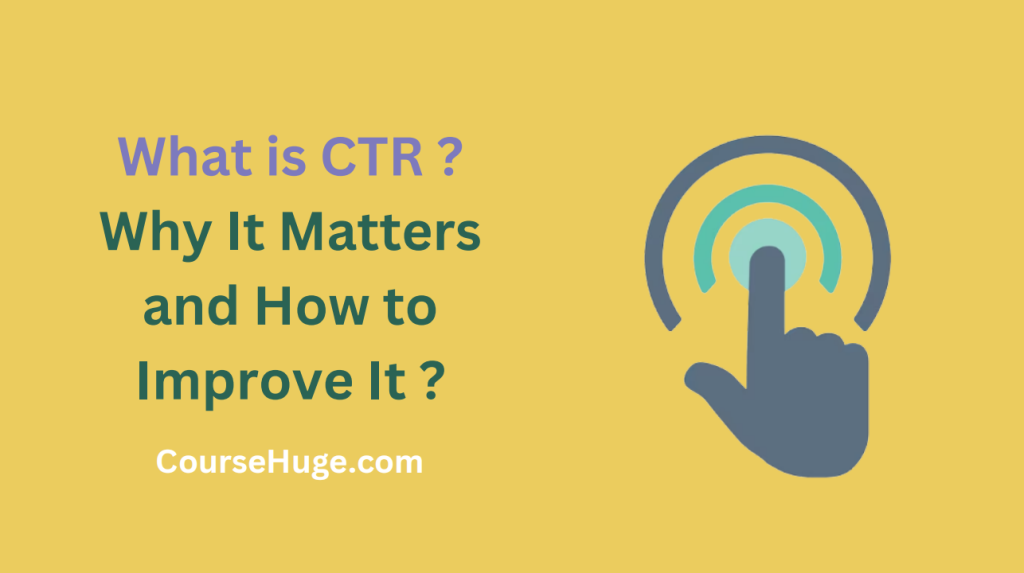Learning
What is CTR ? Why It Matters and How to Improve It in 6 Steps?
Highlight:
- Understanding CTR: Click-through rate (CTR) is a vital metric in digital marketing. It represents the percentage of users who click on an individual link out of the total who view it. It’s a clear indicator of content relevance and appeal.
- Impact on SEO: A high CTR can significantly influence search engine rankings. It tells search engines that your content is valuable, leading to better visibility and organic traffic.
- Industry Benchmarks: CTR benchmarks vary across platforms and industries. For instance, Google Ads might average around 3.17%, while social media platforms like Instagram can see CTRs of around 1.22%.
- Boosting Your CTR: From crafting compelling headlines to targeting the right audience, several actionable steps can enhance your CTR. Regular monitoring, A/B testing, and audience segmentation are crucial to an effective CTR optimization strategy.
Introduction:
Click-Through Rate, commonly known as CTR, is a pivotal metric in the digital marketing realm. It’s the ratio of users who click on the link to the number of total users who view a page, ad, or email. In essence, CTR clearly indicates how well your keywords and ads resonate with your audience. A high CTR means your content is compelling and relevant, increasing traffic and potential conversions. But what is CTR exactly? Why is it so crucial, and how can you optimize it? This guide delves deep into CTR, unraveling its mysteries and offering actionable steps to boost it.
2. Unraveling the CTR Mystery
2.1. So, What is CTR:
Click-through rate, or CTR, is a fundamental digital marketing and SEO metric. It represents the percentage of people who click on an individual link out of the total number who see it. The formula to calculate CTR is straightforward:
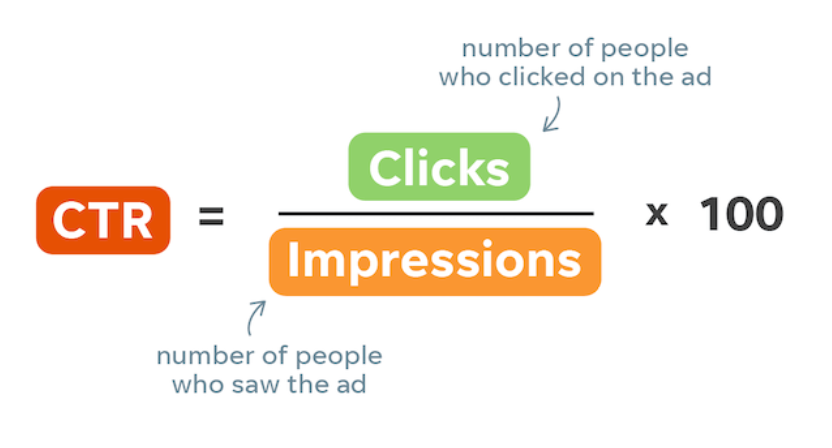
For instance, if an advertisement is displayed 100 times and receives five clicks, the CTR would be 5%. This metric is invaluable as it provides insights into the effectiveness of your content, advertisements, or campaigns.
2.2. Why is CTR a Crucial Metric?
CTR serves as a litmus test for the relevance and appeal of your online content. Here’s why it’s indispensable:
- Engagement Indicator: A high CTR signifies that your content or ad resonates with the audience. It means your message is compelling enough for viewers to take action.
- SEO Rankings: Search engines consider CTR a ranking factor, especially Google. If users frequently click on your link from the search results, it tells search engines that your content is valuable and relevant to the query.
- Cost Efficiency: For paid campaigns, a higher CTR can lead to a lower cost per click (CPC). It ensures you’re getting more value and engagement for your advertising budget.
- Feedback Mechanism: A low CTR can serve as an early warning sign. It indicates that your content or ad might not be as relevant or engaging as it should be, prompting necessary adjustments.
Understanding and optimizing CTR can be the key difference between a successful campaign and a missed opportunity in the digital landscape.
3. The Real Impact of CTR on SEO
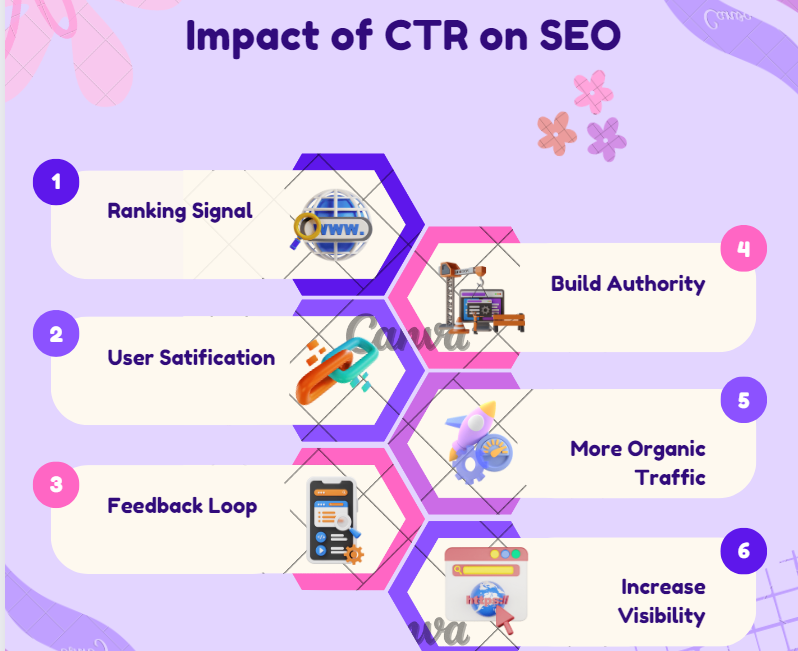
3.1. How Search Engines View CTR
Search engines, particularly Google, have evolved tremendously over the years. Their primary goal is to deliver users the most relevant and valuable content. CTR plays a significant role in this quest. Here’s how:
- Ranking Signal: While Google has never explicitly stated that CTR is a direct ranking factor, numerous studies and SEO experts suggest a strong correlation. When a webpage garners a higher-than-expected CTR for its current rank, it strongly indicates to search engines that the page is highly relevant to the user’s query.
- User Satisfaction: A high CTR, coupled with low bounce rates and longer dwell times, indicates that users are finding what they’re looking for on your page. This user satisfaction can indirectly influence rankings.
- Feedback Loop: Search engines continuously refine their algorithms. If a page consistently achieves a low CTR, it might be demoted in rankings over time, making way for more relevant content.
3.2. The Snowball Effect of a Good CTR
Achieving a high CTR can create a virtuous cycle, often called the “snowball effect.” Here’s how it unfolds:
- Increased Visibility: Your content may climb the search engine results pages (SERPs) as your CTR improves. This elevated position can lead to even more clicks and visibility.
- More Organic Traffic: A higher position in SERPs typically results in a significant boost in organic traffic. More traffic can increase user engagement, social shares, and backlinks.
- Enhanced Authority and Trust: As more users click on your content, it establishes a sense of authority and trust. Users begin to recognize your brand or website as a reliable source of information.
- Compounding Returns: The combined benefits of increased visibility, traffic, and authority can lead to even higher CTRs in the future. It’s a cycle where success breeds more success.
A good CTR benefits your immediate campaign or content and can set the stage for sustained long-term growth and visibility.
4. Industry Benchmarks: What’s a Good CTR?
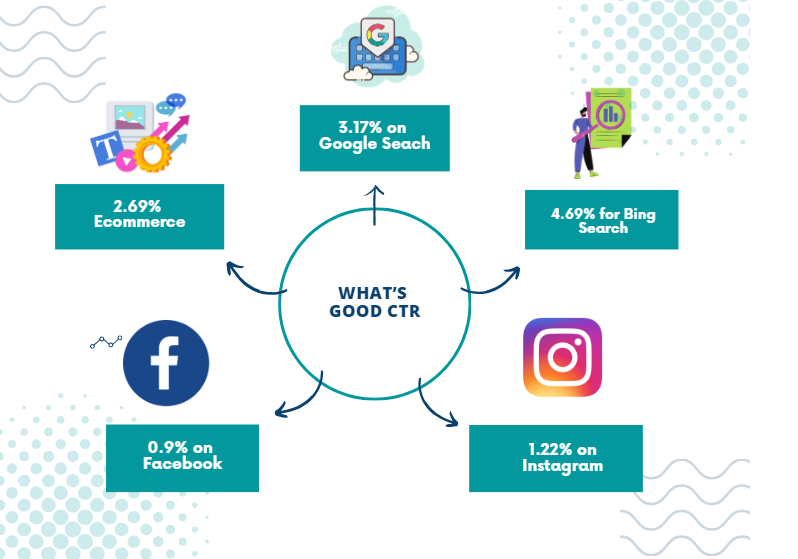
4.1. CTR Benchmarks for Search Ads
Regarding search ads, the average CTR can vary significantly based on the industry and the platform. For instance:
- Google Search Network: The average CTR across all industries is around 3.17%. However, this can fluctuate. For example, the travel and hospitality sector might see an average CTR of 4.68%, while e-commerce might hover around 2.69%.
- Bing: Generally, Bing has a slightly higher average CTR than Google, with some industries reaching averages of up to 4.12%.
Understanding these benchmarks is essential, but remember that they serve as a general guideline. Your specific goals, target audience, and ad quality can lead to variations in your CTR.
4.2. Social Media CTR Averages
Social media platforms, with their diverse user bases and content formats, also present varied CTR benchmarks:
- Facebook: With its vast user base, Facebook’s average ad CTR is about 0.9%. However, this can vary based on the ad type. For instance, video ads have a different CTR compared to carousel ads.
- Instagram: Given its visual nature, Instagram generally boasts a higher CTR, averaging around 1.22% for most industries.
- Twitter: with its fast-paced feed, Twitter sees an average CTR of about 1.5% for promoted tweets.
- LinkedIn: Catering to a professional audience, LinkedIn’s average CTR for sponsored content is around 0.4%.
While these numbers provide a general overview, setting realistic expectations based on your industry, content quality, and target audience is crucial. Regularly monitoring and optimizing your campaigns can help you inch closer to or surpass these benchmarks.
5. CTR Manipulation: What You Need to Know
Click-through rate (CTR) is a pivotal metric in the digital marketing landscape. However, like many metrics, it’s not immune to manipulation.
What is CTR Manipulation? “CTR Manipulation” refers to tactics employed to artificially boost the CTR of a webpage, ad, or content. This can be achieved through:
- Using bots to generate clicks on links.
- Crafting misleading headlines to entice genuine users.
The Risks Involved: While these tactics might temporarily spike in visibility or rankings, major search engines, including Google, are increasingly skilled at identifying such deceptive behaviors. The repercussions of CTR manipulation can be severe:
- Websites might face penalties, including a drop in rankings.
- In extreme cases, they could be entirely removed from search results.
For long-term success, it’s paramount to approach CTR with authenticity. Prioritize genuine strategies that enhance your content’s relevance and appeal rather than resorting to shortcuts that could jeopardize your brand’s reputation and search visibility.
6. How to Improve CTR – Step by Step Guide
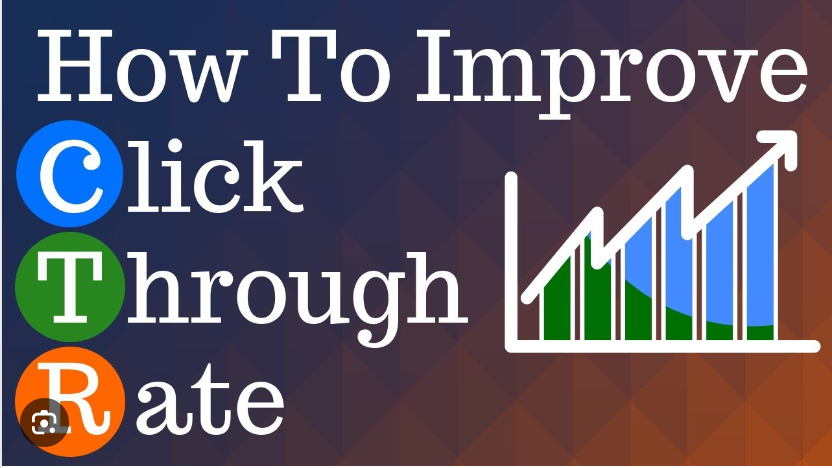
Example: Imagine you’re a small business owner selling artisanal coffee blends online. You’ve set up Google Ads to promote your best-selling blend. After a month, you notice that your ad has been shown to users 10,000 times, but only 200 clicked. This means your CTR is 2%. Given the industry average CTR for e-commerce is around 2.5%, you realize there’s room for improvement.
Step 1: Optimize Your Headline and Copy:
- Why: The headline and copy are the first things users see. They should be compelling enough to make them want to click.
- How: Use powerful words and address the user’s needs. Instead of “Buy Our Coffee,” a more engaging headline might be “Discover the Rich Aroma of Our Best-Selling Blend!” For the copy, emphasize the unique selling points, like “Handpicked beans roasted to perfection for the true coffee aficionado.”
Step 2: Use High-Quality Images:
- Why: A captivating image can make your ad stand out.
- How: Use high-resolution images of your coffee blend, perhaps a steaming cup or beans being roasted.
Step 3: Implement A/B Testing:
- Why: Different users respond to different stimuli. A/B testing helps identify what works best.
- How: Create two versions of your ad with different headlines, images, or copy and see which one performs better.
Step 4: Target the Right Audience:
- Why: Only some people are coffee lovers. Targeting ensures your ad is shown to those most likely to click.
- How: Use Google Ads’ targeting options to focus on users interested in gourmet foods, beverages, or, specifically, coffee.
Step 5: Optimize Landing Pages:
- Why: A high CTR is great, but it’s a wasted effort if users bounce off your website immediately.
- How: Ensure the landing page is relevant to the ad. If you’re advertising a coffee blend, the landing page should highlight that blend, not just your homepage.
Step 6: Review and Adjust Regularly:
- Why: Digital marketing landscapes change rapidly. What works today might not work tomorrow.
- How: Regularly check your CTR. If it drops, revisit the above steps. If it increases, understand what worked and replicate it.
By following these steps, our hypothetical coffee business owner can work towards enhancing their CTR, leading to more potential customers and increased sales.
7. Conclusion:
Understanding and optimizing your Click-Through Rate (CTR) is more than a numbers game. It’s about ensuring your content resonates with your audience, providing value, and meeting user expectations. A high CTR is a testament to the effectiveness of your digital strategies, be it in advertising, content creation, or SEO.
As we’ve explored, several factors influence CTR, from the initial impression created by headlines to the relevance ensured by targeting the right audience. Following the step-by-step guide, you can methodically enhance your CTR, leading to more traffic, better engagement, and higher conversions.
Remember, the digital landscape is ever-evolving. Regularly review your strategies, stay updated with industry benchmarks, and always be prepared to adapt. With a proactive approach and a keen understanding of your audience’s needs, achieving an impressive CTR is well within reach.
8. Further Learning Resources:
For those looking to delve deeper into the topic of Click-Through Rate (CTR) and its implications, here are some external learning resources related to the subject:
- What’s a Good Click-Through Rate (CTR)? [2023 Data] – WebFX – An article overviews industry-specific CTRs and offers steps to improve your CTR. Source
9. Frequently Asked Questions (FAQs):
1. Q: What does CTR mean?
CTR, or Click-Through Rate, is a metric that measures the effectiveness of your online campaigns, be it advertisements, email campaigns, or search engine results. It’s calculated by dividing the number of clicks an ad or link receives by the number of times it’s viewed (impressions) and multiplying by 100 to get a percentage. For instance, if your ad were shown 100 times and received five clicks, your CTR would be 5%.
2. Q: How do you figure out your CTR?
Calculating your CTR is straightforward. Use the formula:
CTR=(NumberofClicks/NumberofImpressions)×100. For example, if you had 50 clicks and 1,000 impressions, your CTR would be 5%. It’s a quick way to gauge the effectiveness of your campaigns.
3. Q: Why should we care about CTR?
CTR is a vital metric because it indicates how relevant and appealing your content or ads are to your audience. A higher CTR means your content resonates well, leading to more traffic and potential conversions. Moreover, in the realm of SEO, a good CTR can improve your search engine ranking, as it signals to search engines like Google that your content is valuable to users.
4. Q: What’s a good CTR percentage?
A “good” CTR can vary depending on the platform and industry. For instance, the average CTR for Google Ads is around 2-3%, but this can be higher or lower based on the sector. On social media platforms like Facebook, a CTR of 0.5-1% is considered average. However, always aim for a higher CTR, as it indicates better engagement and relevance.
5. Q: How does CTR affect social media platforms?
On social media, CTR is a reflection of how engaging and relevant your content is to your followers. A high CTR indicates that your content is compelling enough for users to take action. Moreover, platforms like Facebook use CTR as a factor in their algorithms. Posts with higher CTRs are more likely to be shown to more users, increasing visibility and engagement.
For a deeper understanding, consider this: A study by WordStream found that the top 10% of Facebook advertisers have an average CTR of 4.11%, showcasing the potential for high engagement when content truly resonates with the audience.

